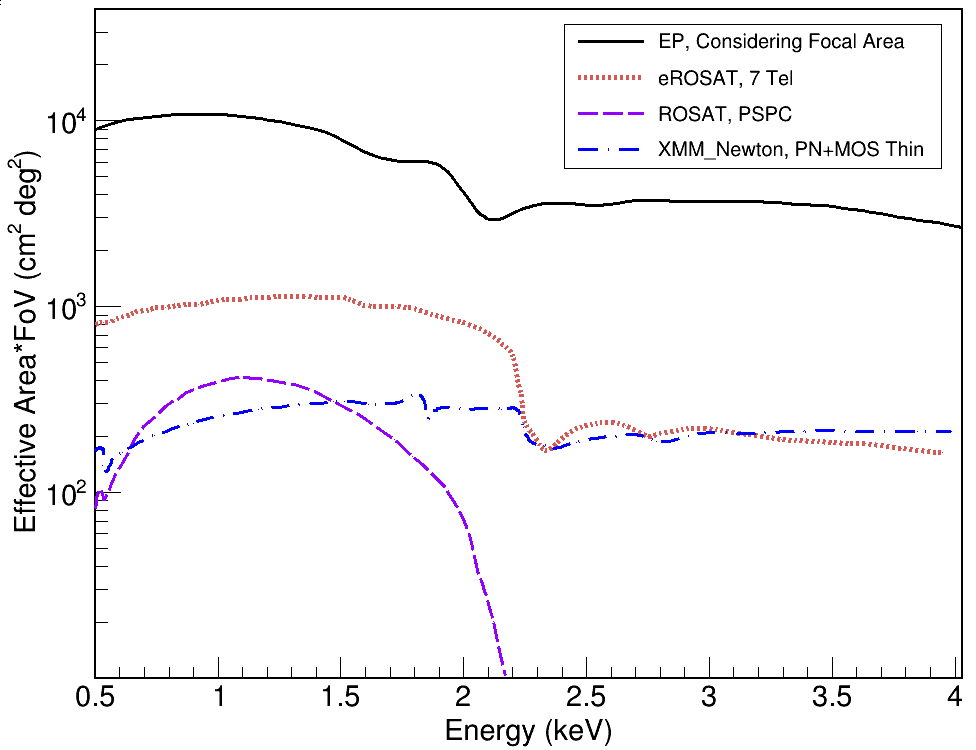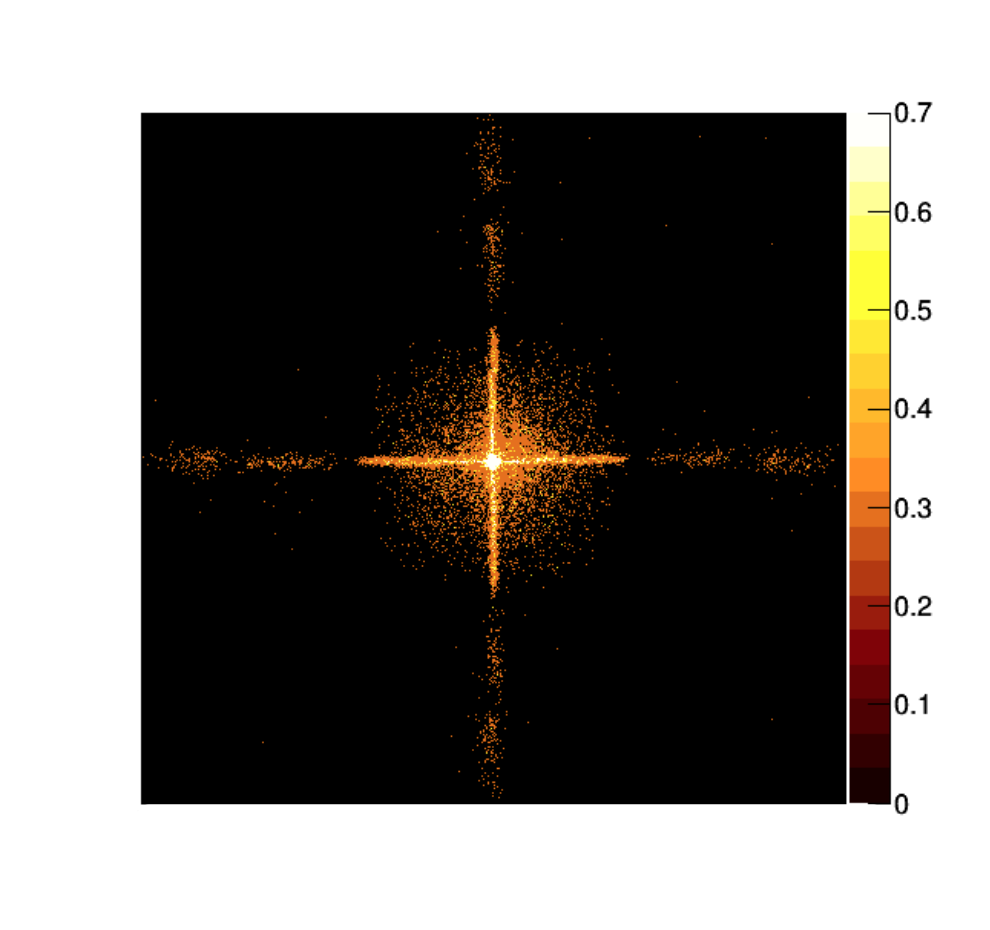Science Capability


Figure 2 Grasp of EP/WXT (effective area times field of view) and comparison with the current and future missions with focusing X-ray optics.

Figure 3 Profile of the simulated point-spread-function of WXT of the central spot on the focal plane. The PSF is ~5 arcmin (FWHM).
The simulated background generated on the WXT detectors, including the incident diffuse X-ray emission and background generated by charged particles in orbit (out of the SAA), is shown in Figure 4. The total background level is estimated to be ~ 0.3 counts s-1 cm-2 (for CMOS with a thickness of 10micron). Based on this result, the estimated detection sensitivity of WXT for a point-like source with a typical X-ray spectrum is shown in Figure 5. In a 1000s exposure, a sensitivity of approximately ~2.58×10-11 ergs s-1 cm-2 in the 0.5-4 keV band (or ~0.8 mCrab) can be achieved at the 5-sigma level. Such a sensitivity improves by one order of magnitude or more upon the previous and current wide-field X-ray monitors, including MAXI and Swift/BAT. Figure 6 shows a simulated X-ray sky image of 400 sq. deg. observed by WXT with an accumulated exposure of 10 kilo-seconds.

Figure 4 Simulated background on the detector of WXT in orbit, including the incident diffuse X-ray emission and background generated by charged particles in space. The detectors are back-illuminated CMOSs (layer thickness of 10um and the surface is coated with 200 nm-thick Aluminum).

Figure 5 Detection sensitivity at 5 sigma of WXT and its dependence on accumulative exposure time for cosmic X-ray sources with typical spectral shape (power-law photon index of -2, assuming a Galactic ISM absorption column density 3×1020 cm-2). The dashed lines show the confidence interval of 90%.

Figure 6 True X-ray image produced by one mirror assembly qualification model of the WXT model of the WXT module developed at NAOC (measured at MPE/Panter by using a parallel beam of a Cu-Lα line source of 930 eV). The PSF is symmetric, with an angular resolution <5 arcmin in FWHM for the central spot (Courtesy ESA/MPE).